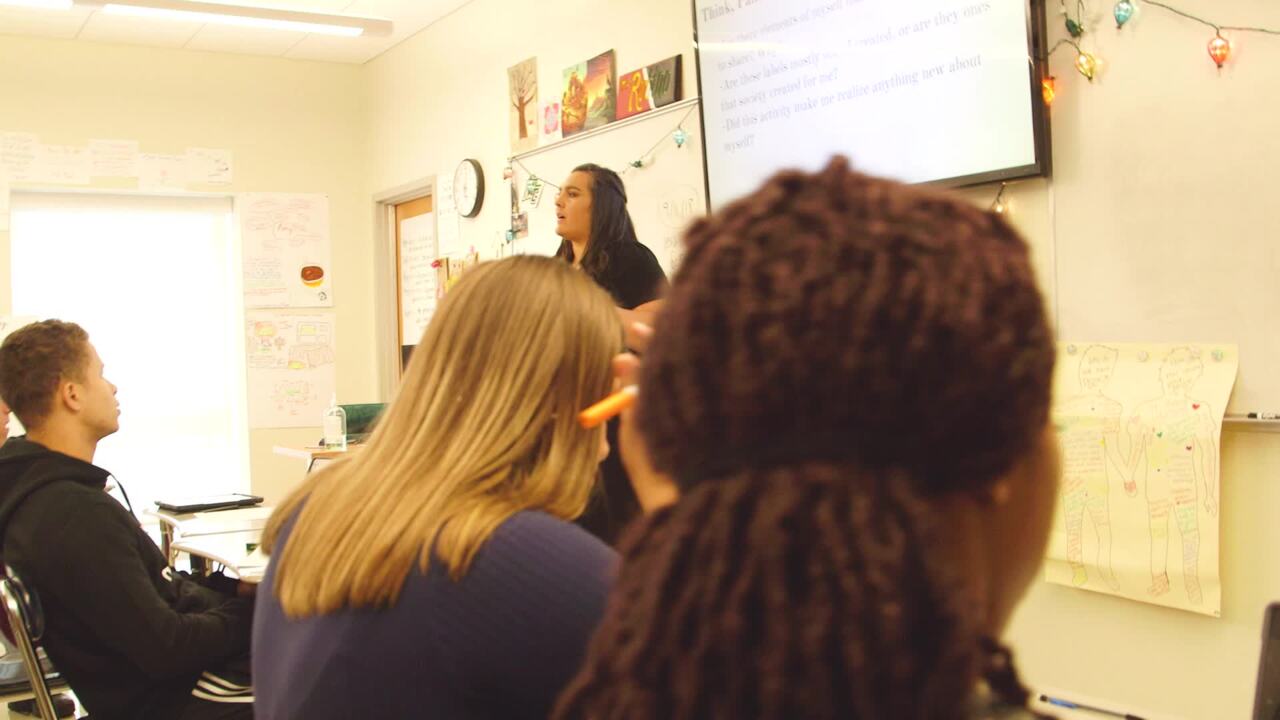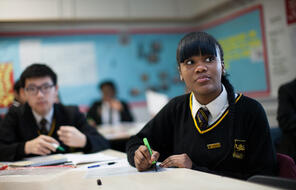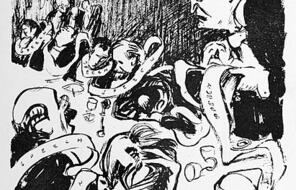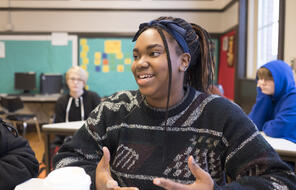I really like identity charts. They're very useful for literature, but also to start the year, like we are thinking about ourselves and kind of the labels that other people give us and the labels we give ourselves.
In an identity chart, a student would put their name in the middle and then they would identify themselves in all different ways. They would think about their family relations, their relations to their community, their interests, their groups of people they hang out with.
This is a class of seniors. And it's just the first two weeks of school. They're going to be writing their narrative about their lives for their college essay. They've already had a little bit of experience with identity charts. We had them do an identity chart for an author about a story they read.
So now they're going to take all of those skills they learned in the last class and apply them to themselves and really start thinking about who they are and the labels that they are given and the categories they would put themselves in, and also think about the categories and the labels that other people would give them and that they would get from somebody else.
So today we will be creating identity charts for ourselves. So last class, you created an identity chart for your author of your story that you were assigned to. So today you're going to be making an identity chart for yourself. For some people, it'll be a little bit more difficult to create an identity chart for yourself. And for other people, it'll be easy. But we'll see.
So the very first thing I want you to do is-- I'm going to give you paper, I'm going to give you markers, and just like we did-- and you can see the examples around the room-- just like we did for your character, or your author in the story, you're going to put your name in the middle and make an identity chart for yourself.
This identity chart is not going to be hung up around the room. It's not something that I'll share with other people. But you are going to share with your neighbors or someone near you. So just keep that in mind when you're making your chart.
So for about 15 minutes, I'm going to let you just sit by yourself make your identity chart. And then you'll be ready to share out next. OK?
[SIDE CONVERSATIONS]
All right. About one more minute to finish up.
Did you have any inspirations for what you want to do that you wanted to write down?
I mean, I love math. That's pretty much like why I want to pursue the future.
Is there anybody who comes to mind when you think about who you want to be like?
My brother.
Yeah, write down your brother.
Yeah, write your brother.
Is your brother an engineer?
I mean, no. But he's like my motivation, I guess.
Oh, he's like the person you look up to.
Yeah.
My brother is too.
OK. So now that you've completed your beautiful, colorful identity charts, some of you really went all out and I really appreciate that. I'm going to have you work together. Make sure when you work together on these questions, you work with somebody that you feel comfortable with. You're going to be sharing some personal information. You're going to be sharing your identity charts. So make sure you just feel comfortable. And if you have to get up and move to someone else, you can do that.
So three questions you're going to look at, discuss, talk to each other. And then, I'll give you probably about 12 minutes to do this. It's a good number. Twelve minutes to talk about all three of these questions. And then we'll come back together and I'll ask some people to share out their thoughts. Sound good? OK.
I put involved and political. Because you know-- you guys know I care a lot about politics.
All politics, all my knowledge comes from you.
She doesn't watch the news. It's all from me.
[INAUDIBLE] all the news.
Yeah, for school, I'm considering being a lawyer. I'm debating on it. I'm really not sure if I want to--
What type of lawyer, though?
I don't know. That's what it is. I don't know. There are so many things I want to do. But I know my baseline for a career, like my career path is to help people.
Wrap up your conversations please. Sorry to do that.
All right. So let's just go through the questions together. Like I said, you had the opportunity to share with people that you feel comfortable with or the most comfortable with in the room. And I'd just like to hear from some people if they feel comfortable sharing with everybody.
First question, are there elements of yourself that you consciously chose not to put on your identity chart and why? Yeah?
So the reason why is because, admittedly, I do have a lot of issues. I do have a lot of self-confidence issues. So I feel like some of the stuff that I put on there, I would get-- I'm not sure how people would view me if I put it on there.
OK. And I think that-- raise your hand if you feel-- have ever felt that way about something. I have, too. So we all feel that way. So from time to time, we all feel like something about our identity is not acceptable in an environment. Or we feel uncomfortable. So you're definitely not alone in feeling that way. Thank you.
I think the lesson went really well. I think that they were very self-aware. And I think that more people spoke up than I expected and different students than have spoken up this year so far. So I think it went really well.
I think students are walking away with a stronger sense of how they define themselves. And I think they're also, which I didn't expect, coming away with an idea of what makes them who they are as known by their friends and people they were sitting with.
There were quite a few students that we're talking about how their partner told them, oh, you like this or you're funny or you're smart, and they said, oh, I didn't even think of that.
So it was nice for them to take a look at how they define themselves using the labels that they either create or learn from society, and then also to figure out what their peers thought of them and then discover that, oh yeah, I didn't even remember that about myself. So that was a nice moment.













